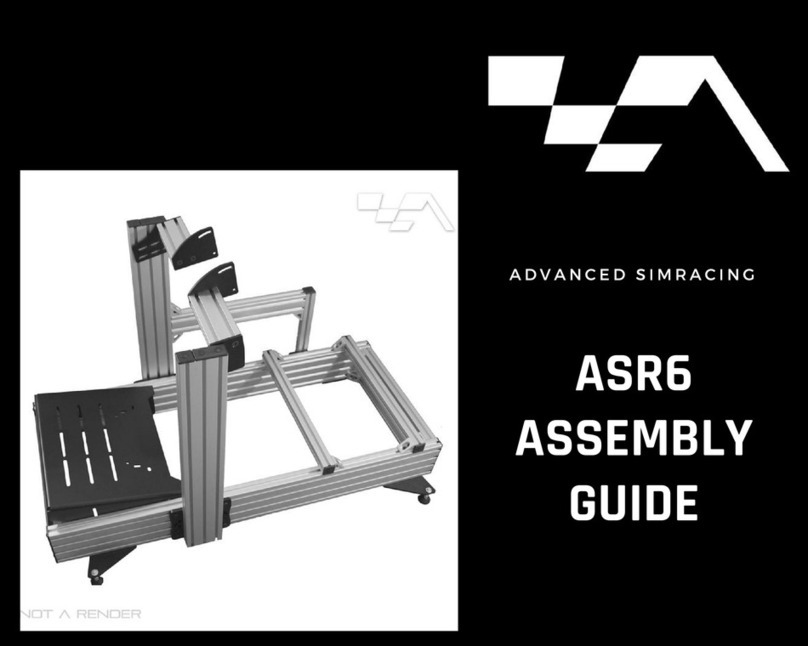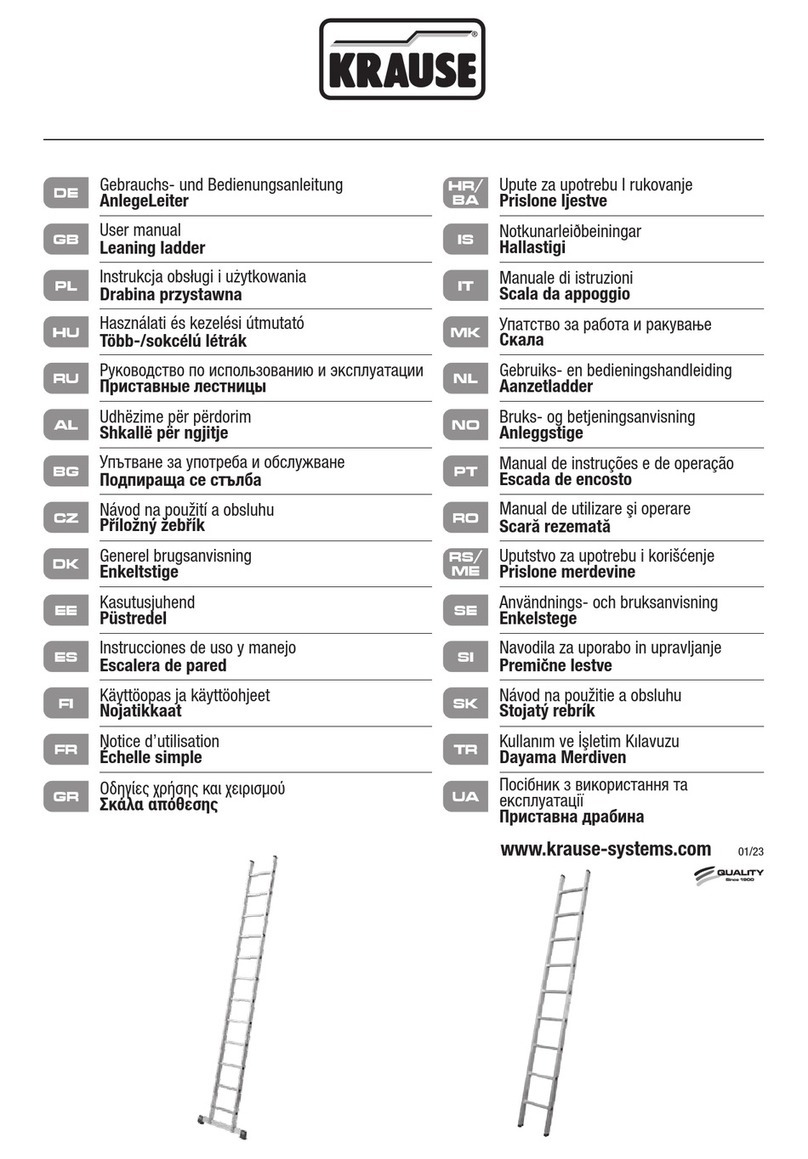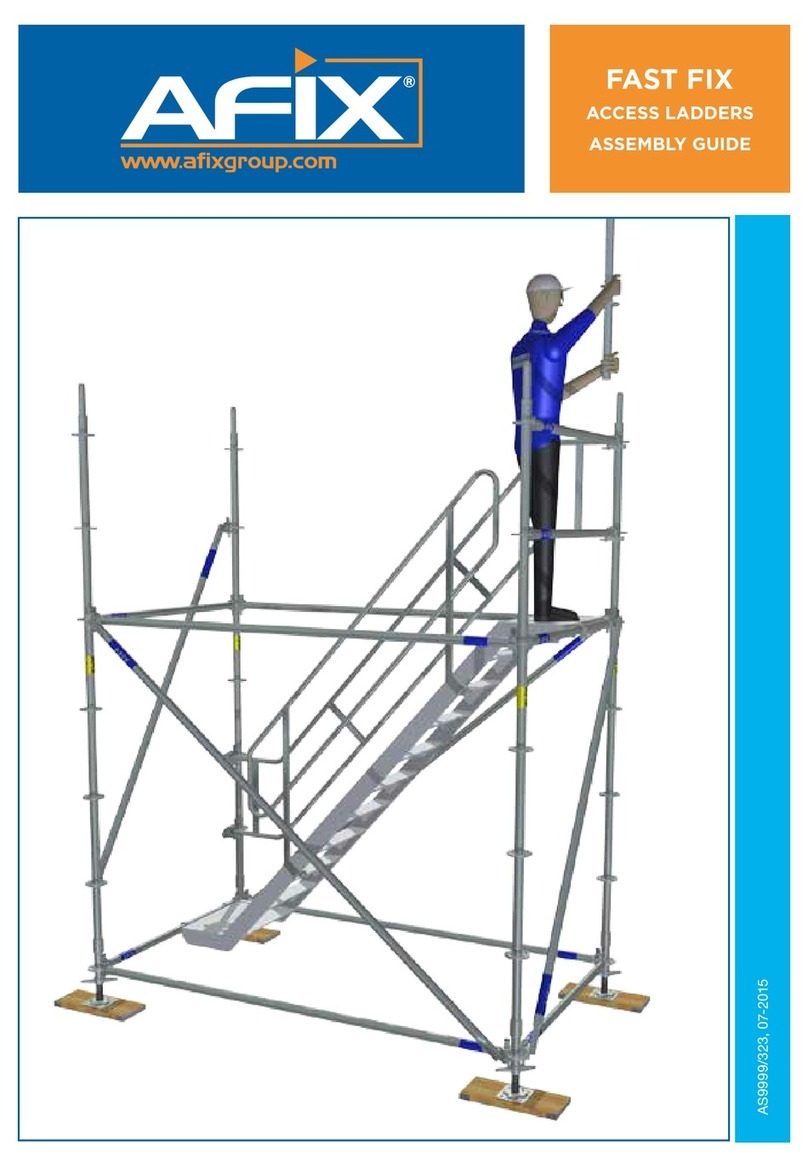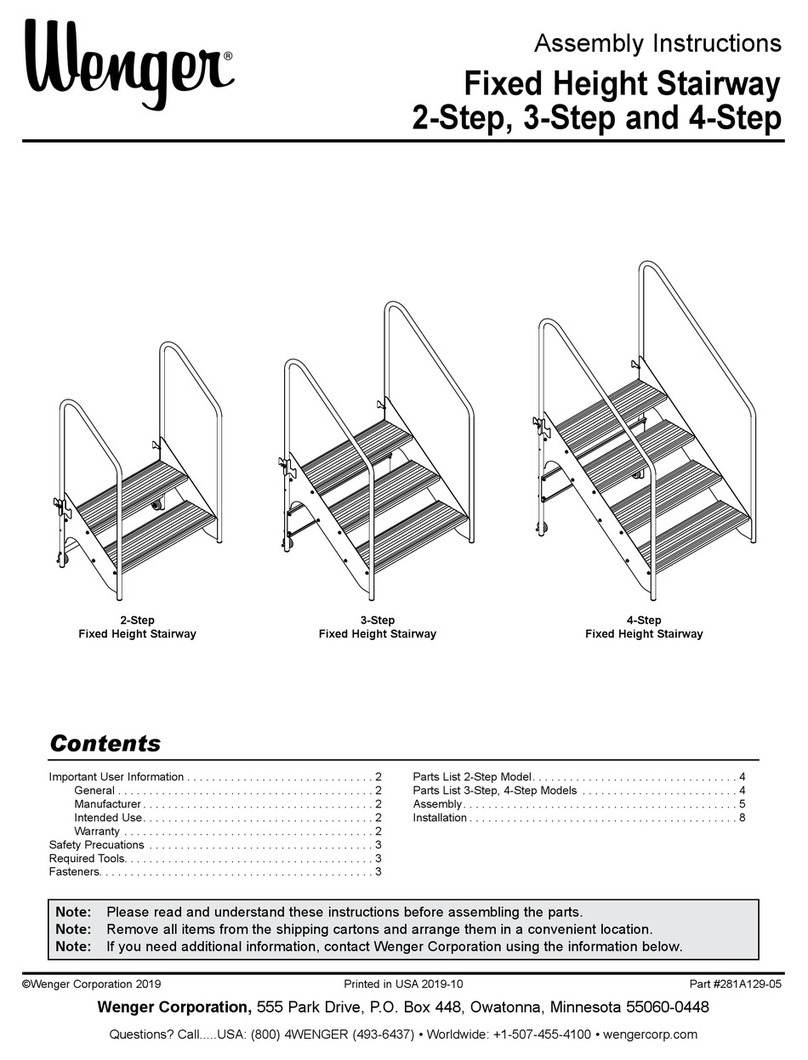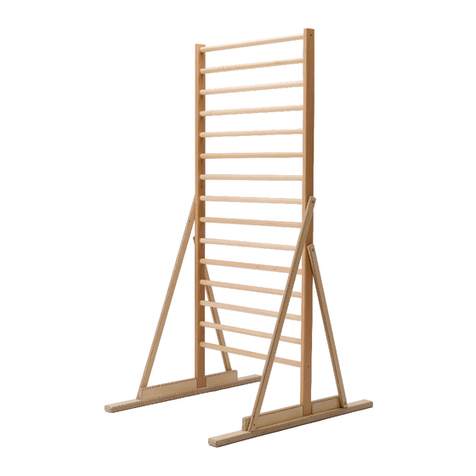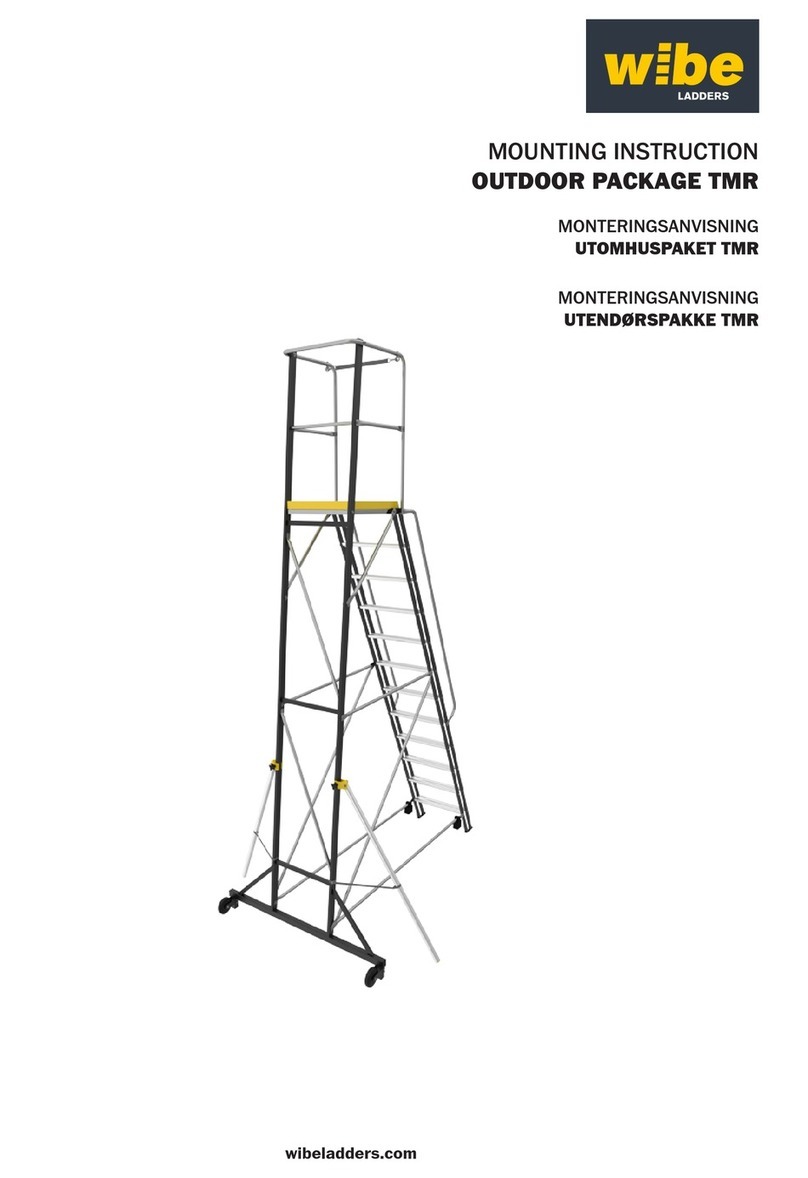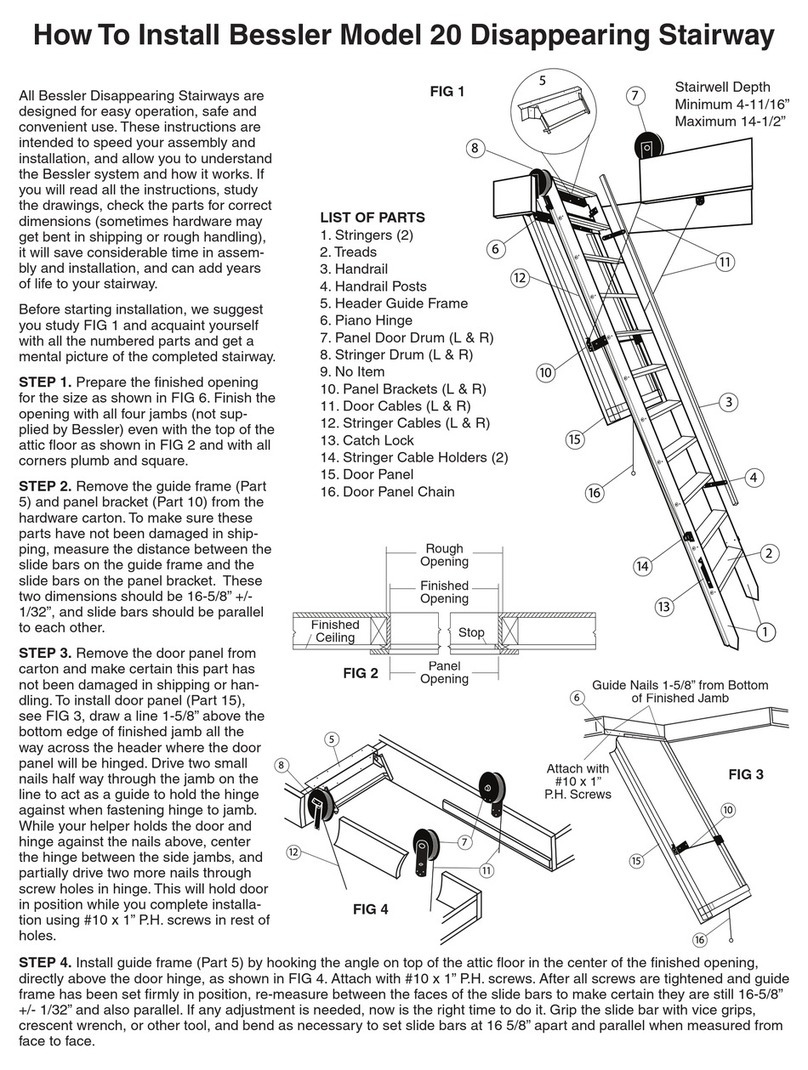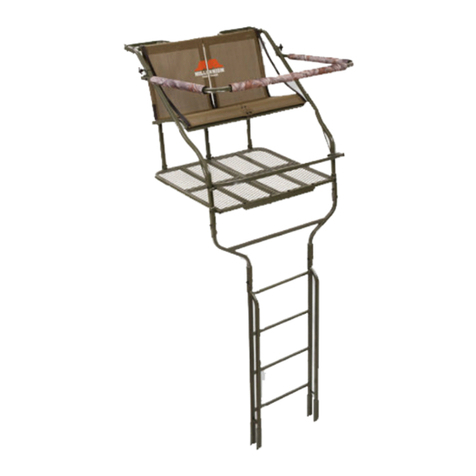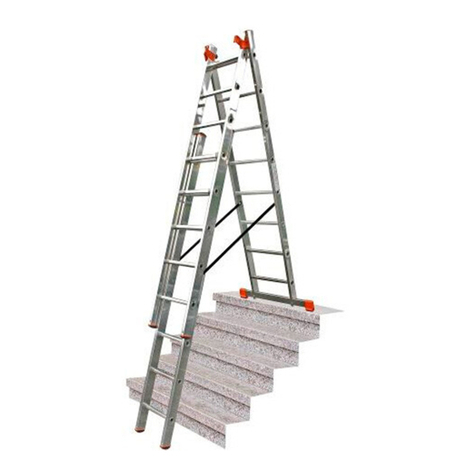1
WARNING
PLEASE READ THESE INSTRUCTIONS CAREFULLY AND KEEP FOR FUTURE REFERENCE
Read all instructions carefully before use and retain for
future reference. Pass these instructions on to any party
using the Telescopic Ladder.
WARNING! Failure to adhere to the warnings and
instructions contained in this manual and/or on the
product itself could result in serious or fatal injury.
INTENDED USE.
Only use this ladder system as described in these
instructions. Any other use is deemed improper and may
result in damage to property or personal injury.
This ladder system is designed and intended for domestic
use as a climbing aid in the home or garden, and for
hobbies.
This ladder system should only be used for light work of
short duration.
WARNING! Use non-conductive ladders for unavoidable
live electrical work. This ladder is NOT suitable for live
electrical work. It is conductive and offers no protection
from electrical hazards.
This product is not intended for use by persons with
reduced physical, sensory or mental capabilities, or lack
of experience and knowledge, unless supervised or given
appropriate instruction concerning the product’s use by a
person responsible for their safety.
This product is not a toy. Children should be supervised
at all times to ensure they do not play with the ladder
system.
BEFORE USE.
Inspect the ladder upon delivery and before first use to
confirm condition and operation of all parts.
Visually check that the ladder is not damaged and is safe
to use at the start of each working day when the ladder
is to be used.
For all users, regular periodic inspection is required.
Remove any contamination from the ladder, such as wet
paint, mud, oil or snow.
Do not use a damaged ladder.
When transporting ladders on roof bars or in a truck,
ensure they are suitably placed and secured to prevent
damage.
Ensure the ladder is suitable for the intended task. If
unsure, contact a qualified person for guidance.
Before using a ladder at work, a risk assessment should
be carried out respecting the legislation in the country
of use.
The surface you will rest the ladder against must be
capable of supporting the weight of the ladder, operator
and any carried objects.
Doors (but not fire doors or similar), windows and areas
of entry/exit should be secured when using the ladder. All
distractions should be reasonably avoided. Always set up
the ladder so that it is always freely accessible.
Ensure that you are fit enough to use a ladder. Certain
medical conditions (including pregnancy) or medication,
alcohol or drug abuse could make ladder use unsafe.
Check with your doctor before using the ladder.
POSITIONING AND ERECTING THE LADDER.
Ensure the ladder is fully collapsed, all locks are secured
and the ladder is free from contaminants before moving
it to the area of work. Only erect and close in a safe
work area.
When positioning the ladder, take into account risk of
collision with the ladder (e.g. from pedestrians, vehicles
or doors). Secure doors (excluding fire exits) and
windows where possible in the area.
Identify any electrical risks in the work area, such as
overhead lines or other exposed electrical equipment.
This ladder does not offer insulation or protection from
electrical hazards.
Only position and use the ladder on an even, level and
unmoveable base.
Never position or use the ladder on slippery surfaces
(such as ice, shiny surfaces or significantly contaminated
solid surfaces) unless additional effective measures
are taken to prevent the ladder slipping or ensuring
contaminated surfaces are sufficiently clean.
The ladder shall be only be positioned flat on its feet,
not the rungs or steps.
Always position the ladder against a flat, non-fragile
surface and secure properly before use (e.g. tied down
or with the use of a suitable stability device).
The ladder shall be erected at the correct position,
such as the correct angle for a leaning ladder (angle of
inclination approximately 1:4), with the rungs or treads
level and the complete opening of a standing ladder
(e.g. 1m away from a the base of a wall if extending to
climb 4m up).
Ensure the locking devices on each rung are fully
secured before use.
Do not attempt to move the ladder when erect.
Never attempt to move or reposition the ladder from
above.
USING THE LADDER.
WARNING! Do not exceed the maximum total load of
150kg/330lbs for this ladder.
Do not use the ladder outside in adverse weather
conditions, such as strong wind or rain.
Never erect or use the ladder upside down. The base
should always sit firmly on the ground.
Leaning ladders used for access to a higher level should
be extended at least 1m above the landing point.
Secure doors (excluding fire exits) and windows where
possible in the work area.

